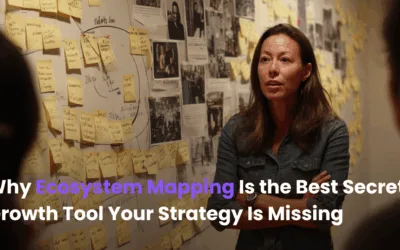As working from home becomes an entrenched part of our working lives, we are now turning our attention to the realities and rituals of a new way of working. This means finding personal ways to incorporate professional practices, and vice versa. It also means incorporating community and social standards into the formal-informal spaces we find ourselves in. It is important to acknowledge country as part of these practices. Additionally, incorporating these acknowledgements into a formal event can show respect and recognition for Indigenous cultures.
One of the inspiring practices we have seen develop over the last few years has been the respect afforded to our indigenous communities. The “Acknowledgement of Country” allows us to pay our respect to the Traditional Custodians of the lands on which we meet and work. Some organisations go so far as to paint these acknowledgements on the walls of their buildings – or create print works for the board and meeting rooms. Some incorporate it into their processes and meeting rituals.
And while in a professional setting we have become used to these practices, it’s not immediately clear how to translate this to the working from home environment. After all, we may not actually know where everyone is located in an online meeting. We may not be prepared with the right words to pay our respects during a virtual meeting.
The NSW Public Service Commission (PSC) have developed some handy policies and guidelines for working from home, including approaches to cultural events, employee wellbeing and Acknowledgement of Country.
The PSC have two main approaches and base each on the physical location of the host of the meeting or webinar:
Understanding Acknowledgement of Country
An Acknowledgement of Country is a significant cultural protocol that recognizes the traditional custodians of the land, their ancestors, and their ongoing connection to the country. It is a gesture of respect that acknowledges the historical and contemporary presence of Aboriginal and Torres Strait Islander peoples on their traditional lands. Understanding the importance of Acknowledgement of Country is crucial in promoting reconciliation, respect, and inclusivity in all aspects of Australian life. By acknowledging the traditional owners, we honor their enduring relationship with the land and their rich cultural heritage, fostering a deeper sense of community and shared history.
Preparing an Acknowledgement of Country
Preparing an Acknowledgement of Country involves researching the traditional owners of the land where you live, work, or speak from. Start by visiting Reconciliation Australia’s website to understand the difference between a Welcome to Country and an Acknowledgement of Country. It is essential to find out who the traditional owners are of the land where you are located and to use their correct name. The AIATSIS map is a valuable resource for identifying the traditional owners of a specific location. Begin with simple recommendations from First Nations organisations, and as you learn more about the traditional owners and their history, adjust your Acknowledgement to reflect a deeper understanding and respect for their culture and connection to the land.
When you know who the Traditional Custodians are for the land on which you are hosting the acknowledgement of country
The recommended form of words are set out below:
I acknowledge that I am hosting/recording this meeting/webinar from the lands of the [insert Traditional Custodians name].
I also acknowledge the Traditional Custodians of the various lands on which you all work today and the Aboriginal and Torres Strait Islander people participating in this [meeting/webinar].
I pay my respects to Elders past, present and emerging and celebrate the diversity of Aboriginal peoples and their ongoing cultures and connections to the lands and waters of NSW.
When you DON’T know who the Traditional Custodians are for the land on which you are hosting the meeting
The recommended form of words are set out below:
I acknowledge the Traditional Custodians of the various lands on which we work today and the Aboriginal and Torres Strait Islander people participating in this meeting/webinar.
I pay my respects to Elders past, present and emerging, and recognise and celebrate the diversity of Aboriginal peoples and their ongoing cultures and connections to the lands and waters of NSW.
Be sure to adapt and adjust your Acknowledgement of Country to suit your location and style of meeting. Also be aware that there is a difference between and Acknowledge of Country and a Welcome to Country (the latter being performed by Traditional Custodians or Aboriginal Elders when welcoming visitors to their lands).
Reconciliation and Respect
Reconciliation is a fundamental process in addressing the historical injustices faced by Aboriginal and Torres Strait Islander peoples. An Acknowledgement of Country serves as a symbolic step toward fostering reconciliation and healing. It signals a commitment to acknowledging the past, raising awareness about the ongoing impacts of colonisation, and working towards a more equitable and inclusive future. By acknowledging country, we demonstrate respect for the traditional owners of the land, their ancestors, and their continuing connection to the country. This act of recognition is a powerful way to support the journey towards reconciliation and to honour the rich cultural heritage of Aboriginal and Torres Strait Islander peoples.
Education and Awareness
Education and awareness are crucial in promoting the importance of Acknowledgement of Country. It is essential to learn about the rich and complex cultures of Aboriginal and Torres Strait Islander peoples, their history, and their experiences. By educating ourselves and others, we can work towards a more inclusive and respectful society. Acknowledging country online and in virtual meetings is also an important step in promoting education and awareness. This practice not only shows respect but also helps to spread knowledge about the significance of the land and the enduring connection of its traditional owners. By incorporating these acknowledgements into our daily routines, we contribute to a broader understanding and appreciation of Indigenous Australia.



